- Events & Activities
- Media Releases

News & Media
- Our Programmes
- Shared Articles by Mega Fam Participants
- Submit Your News
- Travel Media Buddy
- Share this article
TOURISM MALAYSIA ANNOUNCES COLLABORATION WITH EXPEDIA GROUP AND LOCAL MEDIA TO PROMOTE MALAYSIA FOR YEAR 2022
KUALA LUMPUR, 26 May 2022 – Tourism Malaysia and Expedia Group, the world’s travel platform, today announced a joint-marketing collaboration to support Malaysia’s domestic and international efforts to promote tourism to Malaysia.
Aligned with Tourism Malaysia’s tourism promotion strategies, the agreement will see both parties embark on an Expedia Group Media Solutions global campaign to promote inbound travel from Australia, the United Kingdom and the United States to Malaysia. The joint campaign will spotlight Malaysia’s hidden and unique tourist attractions, as well as promote the variety of accommodation to Expedia Group’s 750+ million monthly visitors globally.
This timely strategic collaboration will support Malaysia’s target of achieving 2 million tourist arrivals and RM8.6 billion in tourist spending, set for its national ‘Malaysia Truly Asia 2022’ campaign.
In the presence of The Honourable Dato’ Sri Hajah Nancy Binti Shukri, the Minister of Tourism, Arts and Culture Malaysia, Tourism Malaysia, which was represented by Dato’ Haji Zainuddin Abdul Wahab, Director General of Tourism Malaysia and Mr. Doug Park, Vice President of Operations and Services at Expedia Group Media Solutions, executives representing both parties exchanged documents of mutual appreciation and support for a strategic partnership between Tourism Malaysia and Expedia Group.
Driving Malaysia’s Post-Pandemic Tourism Growth and Initiatives
As part of the collaboration, Tourism Malaysia and Expedia Group will also launch a series of marketing campaigns in key global markets like Australia, the United Kingdom and the United States, to drive international inbound tourism to Malaysia.
“As the world’s travel platform, Expedia Group is proud to be embarking on this journey with Tourism Malaysia to promote and help Malaysia rebuild its reign as a top tourist destination in the region, connecting Malaysia’s tourism industry to millions of travellers in Expedia Group’s worldwide network,” said Mr. Doug Park, Vice President of Operations and Services at Expedia Group Media Solutions.
Dato’ Sri Nancy added, “ The Internet of Things (IoT) is no longer a stranger to us, and we have become comfortable with this new norm. It is only crucial for the tourism industry to step onto the bandwagon and be one with this new trend and lifestyle.”
Aside from boosting promotion internationally, Tourism Malaysia is also continuing with its focus to further enhance our domestic promotion with the local media. In addition, the ceremony introduced nine (9) mainstream and new media, namely ASTRO, Media Prima Omnia, Star Media Group, RTM, Sinar Harian, Nanyang Siang Pau, Borneo Post, Free Malaysia Today, and BFM 89.9 Radio, as well as two (2) ambient media which are KLIA TV and AEON, who will work together with Tourism Malaysia in enhancing the Cuti-Cuti Malaysia Campaign for the year 2022, to produce a series of branded contents/ niche programmes emphasising on the PRE 2.0 projects, to cater for the local market.
“Tourism Malaysia will be intensifying the campaign together with these respective platforms through various means, including electronics, print, and digital, covering tourist destinations within Malaysia. A special thanks to the Ministry of Housing and Local Government Malaysia (KPKT) for providing us with their digital billboards across the states in Malaysia,” said Dato’ Sri Nancy. She also acknowledged all local media that have been with Tourism Malaysia, supporting the Cuti-Cuti Malaysia Campaign all these years.
About Tourism Malaysia
Malaysia Tourism Promotion Board, also known as Tourism Malaysia, is an agency under the Ministry of Tourism, Arts & Culture Malaysia. It focuses on the specific task of promoting Malaysia as a preferred tourism destination. Since its inception, it has emerged as a major player in the international tourism scene. For more information, visit Tourism Malaysia’s social media accounts on Facebook , Instagram , Twitter , YouTube , and TikTok .
For enquiries, please contact:
Lavinia Rajaram Asia Head of Public Relations Expedia Group [email protected] Tel: +65 8428 0079
Muadz Samat Assistant Director Corporate Communications Division [email protected] Tel: +603 8891 8755

- Client log in
« Back to previous page
Malaysia tourism and leisure sector report 2020-2021.
The tourism and leisure sector is and will be a one of the top contributors to Malaysia’s economy in years to come, putting the onus on the government to invest heavily in the sector. Malaysia’s location makes it a favourable destination for tourists not only in the ASEAN region but from other countries in Asia, such as China, India, and Japan. China and India share a historical and cultural link to the country, but Chinese travellers are the primary targets of Malaysia’s tourism sector. The government is also focusing on ‘high yield’ tourists from the UK, Germany, India, and ASEAN region. In 2019, China and Indonesia were the two countries that registered a 5–10% growth in arrivals into Malaysia, as against de-growth in arrivals from the three other main markets, including Singapore.
This report provides a complete and detailed analysis of the tourism sector for Malaysia. EMIS Insights presents in-depth business intelligence in a standard format across countries and regions, providing a balanced mix between analysis and data.
What this report allows you to do:
- Understand the key elements at play in the tourism sector in Malaysia
- Access forecasts for growth in the sector
- View passenger traffic for the sector in Malaysia
- Crystallise the forces both driving and restraining this sector in Malaysia
- Ascertain Malaysia’s position in the global sector
- Build a complete perspective on sector dynamics, investment and employment
- Assess market share by type of tourism (e.g. business, leisure, inbound, outbound)
- Understand the competitive landscape and who the major players are
- View M&A activity and major deals
- Gain an understanding of the regulatory environment for the sector in Malaysia
- Build a clear picture of trends and issues for tourism infrastructure and accommodation.
See below for a complete table of report contents:
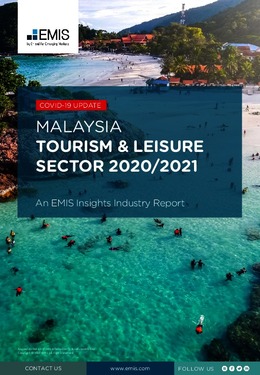
Email us at: [email protected]
SEE BELOW FOR A COMPLETE TABLE OF REPORT CONTENTS:


Tourism in Malaysia
Disclaimer: Some posts on Tourism Teacher may contain affiliate links. If you appreciate this content, you can show your support by making a purchase through these links or by buying me a coffee . Thank you for your support!
Tourism in Malaysia is big business! But why is this industry so important and how is it best managed? Read on to find out…
Geography of Malaysia
Tourism industry in malaysia, statistics about tourism in malaysia, most popular tourist attractions in malaysia, most popular types of tourism in malaysia, impacts of tourism in malaysia , faqs about tourism in malaysia, to conclude: tourism in malaysia.
Malaysia, a Southeast Asian nation known for its diverse cultures and verdant landscapes, holds a prominent position on the global tourism map. Within the tourism industry, Malaysia offers a multitude of opportunities, but also faces its own set of challenges. This article seeks to explore the depths of Malaysia’s tourism sector, emphasising its economic contributions, growth trajectories, and the imperative for sustainable and inclusive development.
Malaysia is a Southeast Asian country located on the Malay Peninsula and the island of Borneo. It is divided into two main regions: Peninsular Malaysia and East Malaysia.
- Peninsular Malaysia: This region is situated on the southern part of the Malay Peninsula, bordered by Thailand to the north and connected to the island of Singapore via a causeway. The landscape of Peninsular Malaysia is characterized by a coastal plain along the western and eastern coasts, with mountainous regions in the interior. The Titiwangsa Mountains, running from north to south, form the backbone of the peninsula and include the highest peak, Mount Tahan. The peninsula is also home to several rivers, including the Perak, Pahang, and Johor rivers.
- East Malaysia: This region occupies the northern part of the island of Borneo, sharing borders with Indonesia and Brunei. It is divided into two states: Sabah and Sarawak. East Malaysia features a diverse geography , including coastal plains, hilly areas, and mountain ranges. Mount Kinabalu, the highest peak in Malaysia, is located in Sabah. The region is known for its lush rainforests, which are part of the biodiverse ecosystems of Borneo.
Malaysia has a tropical climate, with high temperatures and humidity throughout the year. The country is also rich in natural resources, including oil, gas, timber, and minerals. Its coastal areas are dotted with beautiful beaches and islands, such as Langkawi and Tioman, which attract tourists from around the world.
Additionally, Malaysia has several significant bodies of water. The South China Sea borders Malaysia to the east, while the Strait of Malacca separates Peninsular Malaysia from the Indonesian island of Sumatra. The country is also home to numerous rivers and inland bodies of water, including Lake Kenyir, which is the largest man-made lake in Southeast Asia.
Overall, Malaysia’s geography offers a mix of diverse landscapes, from mountains and rainforests to coastal plains and stunning islands, making it a visually captivating and ecologically significant country.

The tourism industry in Malaysia has emerged as a vital economic driver, contributing substantially to the nation’s GDP and acting as a catalyst for socio-cultural development. Malaysia’s diverse landscapes, rich cultural heritage, and strategic geographical location have positioned it as an attractive destination for international and domestic tourists alike. This paper aims to provide an academic exploration of the various facets of Malaysia’s tourism industry, encompassing its attractions, government initiatives, challenges, sustainable practices, and future prospects.
Malaysia boasts a plethora of natural and man-made attractions that captivate visitors from around the globe. The country’s scenic beauty encompasses pristine beaches, lush rainforests, majestic mountains, and captivating islands. The iconic Petronas Twin Towers in Kuala Lumpur, historic sites like Melaka City, and the UNESCO World Heritage-listed George Town further add to Malaysia’s allure. Additionally, the country’s cultural diversity, represented by its vibrant festivals, culinary delights, and traditional arts and crafts, offers visitors a unique and immersive experience.
Malaysia’s cultural heritage is a significant draw for tourists seeking to explore the country’s rich history and multicultural society. The nation is home to a harmonious blend of Malay, Chinese, Indian, and indigenous cultures, which coexist and contribute to Malaysia’s distinct identity. Visitors can immerse themselves in cultural celebrations such as Hari Raya Aidilfitri, Chinese New Year, and Deepavali, or delve into traditional practices and arts, such as batik painting, shadow puppetry, and traditional music performances.
The Malaysian government recognizes the tourism industry’s potential for economic growth and has implemented several initiatives to promote and support its development. The Ministry of Tourism, Arts, and Culture (MOTAC) spearheads efforts to enhance tourism infrastructure, attract investments, and implement policies to facilitate tourism growth. The “Visit Malaysia” campaign, launched periodically, serves as a platform to showcase the country’s attractions and increase visitor arrivals. Furthermore, collaborations with international organizations and stakeholders help bolster Malaysia’s tourism reputation on a global scale.
The tourism industry in Malaysia faces certain challenges that require attention for sustained growth. Factors such as seasonality, changing travel patterns, and global economic fluctuations influence tourist arrivals. Ensuring visitor safety and security, preserving environmental sustainability, and maintaining cultural authenticity amidst rapid development pose ongoing challenges. Furthermore, competition from neighboring countries and emerging destinations necessitates continuous innovation and marketing strategies to remain competitive.
Recognizing the importance of sustainable tourism, Malaysia has made significant strides towards promoting environmentally and socially responsible practices within the industry. Efforts include the establishment of eco-tourism destinations, conservation projects, and community-based tourism initiatives that empower local communities. The Green Tourism Initiative and the Malaysian Sustainable Tourism Criteria are notable examples of the government’s commitment to sustainable tourism development.
Malaysia’s tourism industry holds immense potential for future growth and development. The government’s focus on diversifying tourism products, improving connectivity, and enhancing visitor experiences paves the way for continued success. Furthermore, emerging trends such as ecotourism, wellness tourism, and experiential travel present opportunities for innovation and niche market development. The country’s strategic location within the ASEAN region and its well-established infrastructure further contribute to its favorable prospects in the global tourism arena.
The tourism industry in Malaysia represents a vibrant and dynamic sector that contributes significantly to the nation’s economy and cultural fabric. With its diverse attractions, rich cultural heritage, proactive government initiatives, and commitment to sustainable practices, Malaysia continues to attract a steady stream of visitors from across the globe. By addressing challenges and embracing emerging trends, the industry is poised for continued growth and the realization of its full potential in the years to come.

Now lets take a look at some of the key statistics that help us better understand the scale of tourism in Malaysia:
- Tourist Arrivals: In 2019, Malaysia welcomed a record 26.1 million international tourists, which increased by 5.1% compared to the previous year.
- Top Source Countries: The main source countries for tourism in Malaysia are Singapore, Indonesia, China, Thailand, and India.
- Tourism Revenue: In 2019, tourism receipts in Malaysia reached approximately RM86.14 billion (around USD 20.6 billion).
- Employment: The tourism industry in Malaysia provides significant employment opportunities, with around 3.5 million people working directly or indirectly in tourism-related jobs.
- UNESCO World Heritage Sites: Malaysia boasts four UNESCO World Heritage Sites, including George Town, Melaka, Gunung Mulu National Park, and Kinabalu Park.
- Medical Tourism: Malaysia is a popular destination for medical tourism, with state-of-the-art facilities and competitive pricing. In 2019, the country received over 1.3 million medical tourists.
- Eco-Tourism: Malaysia’s rich biodiversity and natural beauty attract eco-tourists. The country has numerous national parks, rainforests, and marine parks, offering diverse flora and fauna.
- Shopping Tourism: Malaysia is known as a shopping paradise, particularly in cities like Kuala Lumpur and Penang. The country offers a wide range of shopping malls, markets, and duty-free zones.
- Muslim-Friendly Tourism: Malaysia is a Muslim-majority country and has developed a reputation as a Muslim-friendly destination. Halal food, prayer facilities, and Islamic attractions cater to the needs of Muslim travelers.
- Cruise Tourism: Malaysia has become a popular destination for cruise ships. Ports such as Port Klang, Penang, and Langkawi attract many international cruise liners, contributing to the growth of cruise tourism in the country.
Malaysia, a multiethnic country with a unique fusion of Malay, Chinese, Indian, and indigenous cultures, offers a wide range of tourist attractions. This study focuses on the most popular destinations that have achieved widespread acclaim and consistently attract a significant number of visitors.
- Petronas Twin Towers: The Petronas Twin Towers, located in Kuala Lumpur, the capital city of Malaysia, stand as an iconic symbol of modern architecture and engineering prowess. These identical towers, reaching a height of 452 meters, held the title of the world’s tallest buildings from 1998 to 2004. Visitors are captivated by the towers’ stunning design, the Skybridge connecting the two structures, and the observation deck offering panoramic views of the city.
- George Town: Designated as a UNESCO World Heritage Site, George Town is a historic city located on the island of Penang. Its unique blend of architectural styles, including British colonial buildings, traditional Chinese shophouses, and Indian temples, showcases the diverse cultural influences that have shaped Malaysia’s history. The city’s vibrant street art, bustling markets, and delectable local cuisine contribute to its immense popularity among tourists.
- Langkawi: Langkawi, an archipelago of 99 islands situated in the Andaman Sea, is renowned for its breathtaking natural beauty. Pristine beaches, lush rainforests, and clear turquoise waters create an idyllic setting for leisure and relaxation. The island offers various attractions such as the Langkawi Cable Car, which provides visitors with stunning panoramic views, and the UNESCO-listed Kilim Karst Geoforest Park, where tourists can explore mangrove forests and limestone caves.
- Mount Kinabalu: Located in the state of Sabah, Mount Kinabalu is the highest peak in Southeast Asia, standing at 4,095 meters. This majestic mountain, surrounded by the Kinabalu National Park, entices adventure seekers and nature enthusiasts from around the world. Scaling its summit requires physical endurance, but the reward is a remarkable sunrise view above the clouds and an opportunity to explore the park’s rich biodiversity, including unique plant species and diverse wildlife.
- Malacca City: Malacca City, also known as Melaka, is a historical gem that bears witness to Malaysia’s colonial past. Recognized as a UNESCO World Heritage Site, this vibrant city showcases a fusion of Portuguese, Dutch, and British architectural influences. Visitors can explore St. Paul’s Church, A Famosa Fort, and the vibrant Jonker Street, famous for its antique shops, night markets, and culinary delights. The city’s rich history and cultural significance make it a must-visit destination.
- Taman Negara: Taman Negara, meaning “National Park” in Malay, is one of the world’s oldest rainforests, dating back over 130 million years. Encompassing dense jungles, cascading waterfalls, and thrilling canopy walkways, this ecological wonderland offers visitors a chance to immerse themselves in the wonders of nature. Guided jungle treks, river cruises, and wildlife spotting expeditions provide a truly adventurous experience.

Malaysia, known for its vibrant multicultural society and captivating landscapes, has emerged as a prominent tourism destination in Southeast Asia. With a diverse range of tourism offerings, the country has successfully attracted visitors seeking various experiences. This study focuses on elucidating the most popular types of tourism in Malaysia and provides a nuanced understanding of their characteristics, significance, and impact.
- Cultural Tourism: Cultural tourism plays a vital role in Malaysia’s tourism industry due to the country’s rich cultural heritage and ethnic diversity. Visitors are enticed by the harmonious coexistence of Malay, Chinese, Indian, and indigenous cultures. Cultural attractions such as religious festivals, heritage sites, traditional arts and crafts, and culinary delights form the core of this tourism type. Popular cultural tourism destinations include George Town (Penang), Malacca City, and Kuala Lumpur.
- Nature and Ecotourism: Malaysia’s abundant natural resources, including rainforests, national parks, and pristine islands, make it an ideal destination for nature and ecotourism. Tourists are drawn to explore the country’s diverse ecosystems, engage in activities like jungle trekking, wildlife spotting, bird watching, and diving in marine reserves such as Sipadan Island and Tunku Abdul Rahman Marine Park. The promotion of sustainable practices and conservation efforts are integral to maintaining the allure of nature-based tourism in Malaysia.
- Adventure Tourism: Adventure tourism caters to thrill-seekers and adrenaline enthusiasts who seek unique and challenging experiences. Malaysia offers a plethora of adventure tourism opportunities, including white-water rafting, rock climbing, caving, canopy walks, and paragliding. Destinations such as Taman Negara, Gunung Kinabalu, and Langkawi Island attract adventure tourists with their awe-inspiring landscapes and adrenaline-pumping activities.
- Medical and Wellness Tourism: Malaysia has emerged as a prominent medical and wellness tourism destination, renowned for its quality healthcare services, modern facilities, and affordable treatments. International visitors often choose Malaysia for medical procedures, including cosmetic surgery, dental treatments, and wellness retreats. The country’s medical hubs such as Kuala Lumpur and Penang boast internationally accredited hospitals and wellness centers, catering to the growing demand for healthcare tourism.
- Gastronomic Tourism: Malaysia’s diverse culinary scene, influenced by Malay, Chinese, Indian, and indigenous cuisines, attracts food enthusiasts from all over the world. The country is renowned for its street food culture, offering a mouthwatering array of flavors and delicacies. Destinations such as Penang, Kuala Lumpur, and Ipoh are known as gastronomic hotspots, showcasing a rich tapestry of culinary traditions and local specialties.

Tourism plays a vital role in Malaysia’s economy, contributing significantly to its GDP and employment opportunities. However, it is crucial to evaluate the broader consequences of tourism in order to make informed decisions regarding sustainable development and resource management. This paper investigates the social, environmental, and economic impacts of tourism in Malaysia, presenting a comprehensive analysis of its positive and negative effects.
- Social Impacts of tourism in Malaysia:
Positive Impacts: a. Cultural Exchange: Tourism facilitates cultural interactions, fostering a sense of understanding and tolerance among visitors and locals.
b. Socio-cultural Revitalization: The preservation and promotion of traditional arts, crafts, and customs contribute to the conservation of cultural heritage.
c. Job Creation: Tourism in Malaysia generates employment opportunities, particularly in the service sector, thus improving the livelihoods of local communities.
Negative Impacts:
a. Socio-cultural Disruption: Rapid tourism development can lead to the commodification and commercialization of local cultures, potentially eroding traditional values and practices.
b. Social Disparities: Income disparities between tourism-rich regions and less developed areas may increase, exacerbating social inequality.
c. Sociocultural Conflicts: Cultural clashes between tourists and locals, often fueled by differences in behavior, customs, and expectations, can strain community cohesion.
- Environmental Impacts of tourism in Malaysia:
Positive Impacts:
a. Conservation Efforts: Revenue from tourism in Malaysia can be channeled into environmental preservation initiatives, contributing to the protection of natural resources, biodiversity, and ecosystems.
b. Awareness and Education: Tourism in Malaysia provides opportunities to educate visitors about environmental conservation, fostering a sense of responsibility and encouraging sustainable practices.
a. Environmental Degradation: Overcrowding, unregulated development, and increased waste generation can place strain on fragile ecosystems and biodiversity.
b. Natural Resource Depletion: Unsustainable tourism practices, such as excessive water consumption and deforestation for infrastructure development, can deplete valuable resources.
c. Carbon Footprint: Tourism-related transportation and energy consumption contribute to greenhouse gas emissions, exacerbating climate change concerns.
- Economic Impacts of tourism in Malaysia:
Positive Impacts:
a. Foreign Exchange Earnings: Tourism in Malaysia generates foreign currency inflows, bolstering the country’s economic stability and reducing trade deficits.
b. Economic Diversification: The tourism sector provides an alternative source of income and employment opportunities, reducing dependence on traditional industries.
c. Small and Medium Enterprises (SME) Development: Tourism in Malaysia stimulates the growth of SMEs, including accommodation providers, tour operators, and local artisans, fostering entrepreneurship and regional economic development.
Negative Impacts:
a. Leakage: Profits from tourism in Malaysia may leak out of the local economy due to foreign ownership, importation of goods and services, and repatriation of earnings by international companies.
b. Seasonality and Dependency: Destinations heavily reliant on tourism in Malaysia can face challenges during low season periods, leading to economic instability and job insecurity for locals.
c. Inflation and Cost of Living: Rapid tourism growth can drive up prices, particularly in popular tourist areas, potentially impacting the affordability of essential goods and services for local residents.
The impacts of tourism in Malaysia are multifaceted, encompassing social, environmental, and economic dimensions. While tourism has brought numerous benefits, such as cultural exchange, job creation, and economic diversification, it has also presented challenges, including cultural disruption, environmental degradation, and economic dependencies. To ensure sustainable tourism development, it is imperative to implement effective policies and strategies that maximize the positive impacts while mitigating the negative consequences, promoting responsible tourism practices, and prioritizing the well-being of local communities and the environment.
Now that we know a bit more about tourism in Malaysia, lets answer some of the most common questions on this topic:

Q: What are the must-visit tourist destinations for tourism in Malaysia?
A: Some of the must-visit tourist destinations in Malaysia include Kuala Lumpur, Penang, Langkawi, Malacca, Borneo (Sabah and Sarawak), Cameron Highlands, and the Perhentian Islands.
Q: What is the best time to visit Malaysia?
A: Malaysia has a tropical climate, so it is generally warm and humid throughout the year. The best time to visit depends on the region you plan to explore. The months from March to October are generally considered the best time to visit the West Coast (Peninsular Malaysia), while the East Coast (Perhentian Islands, Tioman Island) is best visited from April to October. Borneo (Sabah and Sarawak) can be visited year-round, but the dry season from March to October is recommended.
Q: Is it necessary to have a visa to visit Malaysia?
A: The visa requirements for Malaysia depend on your nationality. Many countries have visa-free entry for a certain period, while others may require a visa on arrival or a pre-approved visa. It’s advisable to check with the Malaysian embassy or consulate in your country for the most up-to-date visa information.
Q: What are the popular activities to do in Malaysia?
A: Malaysia offers a wide range of activities for tourists. Some popular activities include exploring the Petronas Towers in Kuala Lumpur, visiting heritage sites in Malacca, enjoying the pristine beaches of Langkawi, diving in Sipadan Island, wildlife spotting in Borneo, experiencing street food in Penang, and trekking in the Cameron Highlands.
Q: Is English widely spoken in Malaysia?
A: Yes, English is widely spoken in Malaysia, especially in urban areas and tourist destinations. Most Malaysians are bilingual and speak both English and Malay (Bahasa Malaysia). You should have no trouble communicating in English with locals.
Q: What is the currency used in Malaysia?
A: The currency used in Malaysia is the Malaysian Ringgit (MYR). It’s advisable to carry some cash, but credit cards are widely accepted in hotels, restaurants, and major establishments.
Q: Is it safe to travel to Malaysia?
A: Malaysia is generally a safe country for tourists. However, it’s always advisable to take normal precautions and be aware of your surroundings, especially in crowded areas or tourist spots. Take care of your belongings and avoid isolated or poorly lit areas at night.
Q: What is the local transportation like in Malaysia?
A: Malaysia has a well-developed transportation system. Major cities have public transportation networks, including buses, trains, and taxis. In Kuala Lumpur, the MRT and LRT (light rail transit) systems are efficient and convenient. Ride-hailing services like Grab are also popular in Malaysia.
Q: What is the cuisine like in Malaysia?
A: Malaysia is renowned for its diverse and delicious cuisine. You can enjoy a variety of dishes influenced by Malay, Chinese, and Indian cuisines. Some popular dishes include Nasi Lemak, Roti Canai, Laksa, Char Kway Teow, and Satay. Don’t miss the opportunity to explore the street food scene in places like Penang and Kuala Lumpur.
Q: Are there any cultural etiquettes to be aware of in Malaysia?
A: Malaysians are generally friendly and welcoming. It’s advisable to dress modestly, especially when visiting religious sites or rural areas. It’s also polite to remove your shoes before entering someone’s home or places of worship.
Malaysia, a confluence of diverse cultures, landscapes, and traditions, remains a significant cornerstone in Southeast Asian tourism. As the nation strides forward, the fusion of environmental stewardship with cultural integrity is paramount. By upholding these tenets, Malaysia reinforces its position as a captivating and sustainable destination on the global stage.
If you enjoyed this article about tourism in Malaysia, I am sure you will love these too:
- 15 fascinating facts about islands
- What is the rural urban fringe? Made SIMPLE
- 10 Things Most People Don’t Know About Aswan in Egypt
- 37 Types of Rain According to Scientists + The General Public
- 12 Things to Know About the Marianas Islands Before You Visit
Liked this article? Click to share!
- Net Zero 2050
- Editor’s Choice
- Entrepreneur
- Environment
- Human Resource
- Travel & Dining

- Commentaries
Ecotourism: Opportunity For The Tourism Sector In Malaysia To Revive
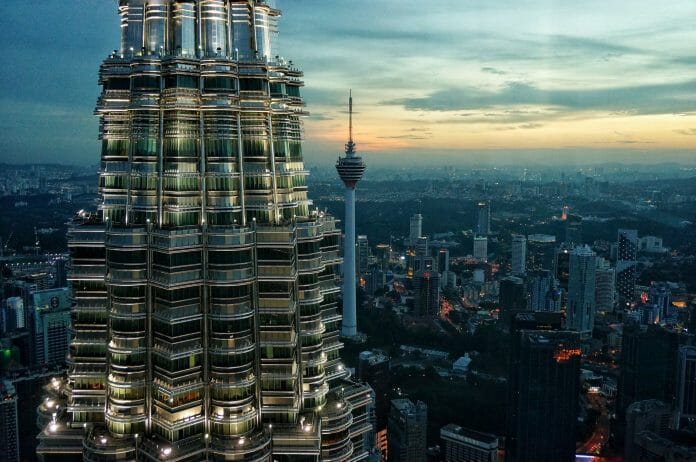
- Attracting ecotourism investors by promoting and emphasising the uniqueness, strengths and development opportunities of Malaysia’s ecotourism sites.
- Introducing a protocol for ecotourism concessions that enhances the quality of the tourist experience in national parks besides ensuring sustainable financing.
- Consolidating research through the re-establishment of educational research centres in selected national parks and urban ecotourism sites through partnerships with local universities and NGOs.
- Repositioning marine protected areas in Malaysia as ecotourism destinations that champion the conservation and management of marine and terrestrial resources for the enjoyment of tourists responsibly while enhancing the well-being of the local community;
- Encouraging variants of the homestay concept by guiding providers to offer a mix of ‘live in’ homestays, annex type homestay, kampungstay, farmstay etc. according to the needs of specific market segments.
- Marketing and promoting activity driven, eco-adventure activities to the gen Y, youth associations, school and university groups and urban families.
- Identifying measures of ecotourism activity including data on visitors and visitor management issues in protected areas.
RELATED ARTICLES MORE FROM AUTHOR
‘we must be pragmatic to achieve global net zero, says minister, sustainability: are we hitting targets but missing the point, concerted effort to rid touts in legal fraternity, leave a reply cancel reply.
Save my name, email, and website in this browser for the next time I comment.
China Too Reveals A Text To Video Large AI Model
Prime minister leaves to attend wef in saudi, chin hin group unveils prime project in klcc area, genting malaysia denies involvement in forest city casino rumour.
Subscribe to Our Newsletter
We know you love savings. Sign up for more!
EIS in Malaysia: What do I need to know?
BY Caitlyn Ng
Updated 13 Aug 2021

There’s an unpleasant activity tasked to the HR department of any local organisation, one that’s a painful experience overall – retrenchment. This is, simply put, the act of dismissing an employee that is justified on the basis that his/her role has become redundant.
According to reports, a total of 17,798 workers were retrenched as of June 2017; the number was almost at 40,000 during 2016. It’s predicted that 50,000 workers are expected to be laid-off by the end of this year. Even then, those figures could be just the tip of the iceberg as many SMEs aren’t aware that they need to report retrenchment/lay-off cases to the Labour Department.
What's covered in this article?
For those affected, it can become an immensely worrying state of affairs, especially if the person is advanced in age, has little to no emergency funds, and has dependents. A form of relief has now appeared in the Employment Insurance Scheme (EIS) which took effect on January 1 2018.
1) What is EIS and am I eligible for it?
The EIS was proposed as a ‘social security net’ for retrenched employees who seek a new job and require temporary financial assistance (up to six months) to get back on their feet.
In 2017, former Prime Minister Datuk Seri Najib Razak announced that RM122mil would be allocated for the first phase of the EIS, which are retrenchment payouts for 2018 (known as ‘interim benefits’). People retrenched in 2018 would be given a fixed amount of RM600 a month for a maximum of three months of unemployment.
The second phase would begin in 2019 onwards when the collected funds will be put to use for retrenchment payouts (job search allowance) and support services. The job search allowance is based on a scaled amount and is dependent on how long a retrenched worker has been contributing.
The insurance scheme will involve some 430,000 employers and 6.6mil employees. It will not only cover retrenchment, but also workers who have resigned due to threats received to themselves or their families (this includes sexual harassment at work).
If you’re a Malaysian, aged between 18 to 60 years and contribute to Socso, then you’re entitled to the monthly contribution at 0.2% of your monthly salary from the employer, in addition to 0.2% from the workers themselves. The contributions should be made before or by the 15th of each month to avoid a fine for late payment.
There is a salary level cap of RM4,000 a month, which means that anyone earning more than RM4,000 a month would still only be contributing 0.2% of that to the fund. That computes to RM7.90 per month.
Only those over the age of 57 and who have never contributed to Socso are exempted from this protection plan. The EIS also does not apply to the following people:
a. Employees who resign voluntarily. b. Employees whose contracts have expired or do not have their contracts renewed. c. Employees who have been terminated for disciplinary reasons or have reached the mandatory age of retirement.
2) What are the benefits of this scheme?
Don’t think of this as yet another programme that eats into your hard-earned salary! There are six specific advantages in having the EIS around, in case the unexpected does happen:
a. Job placement and career counselling b. Job search allowance (EMP) c. Early re-employment allowance (EBSA) d. Reduced income allowance (EPB) e. Training allowance (EL) f. Training fees (FL)
They sound pretty straightforward and they are; this isn’t a welfare programme, it’s an accumulated fund that acts as a support service, with the aim to ensure that people make the effort to get re-employed.
Socso will provide assistance the moment a contributor is retrenched; they will conduct an interview and work with various recruitment agencies (both government and private) to help him or her find a job.
“When a person is retrenched, they are to come to Socso and claim their first job search allowance. We will then monitor the interviews that they are called for and liaise with the potential employers. If they get a job any time before the sixth month, we stop paying the job search allowance for the subsequent months due.
“If they secure a job before six months, we will give them an Early Re-employment Allowance, which is 25% of their remaining job search allowance entitlement,” said Socso EIS chief Mohd Sahar Darusman.
Apart from that, if it was deemed necessary by either Socso or potential employers for the retrenched worker to take a course and learn or improve on his skillset, Socso would pay for it up to a maximum of RM4,000.
“On top of that, while they undergo training, they will receive between RM10 to RM20 per day for a maximum of six months. The key success to the EIS is our support services and the monitoring of the support services,” further explained Sahar.
3) How are the reactions of the employers?
According to a news report in The Sun , there’s some dissent from the Federation of Malaysian Manufacturers (FMM) with the new scheme. Among the issues that they have cited include double benefits for workers under the voluntary or mutual separation schemes (VSS or MSS) as well as further deterioration in work attitude and commitment.
FMM also highlighted how human-related costs would rise significantly, without a commensurate increase in work productivity and quality.
Another organisation that opposed the establishment of the EIS was the Malaysian Employers Federation (MEF), as they stated that there are flaws that are detrimental to both employers and employees.
“The scheme might encourage irresponsible employers to forgo paying retrenchment benefits because they know their employees will be taken care of by other employees and responsible employers,” said MEF Executive Director Datuk Shamsuddin Bardan.
He also stressed that there is no need for the EIS as the current system of paying termination and lay-off benefits under the law and payment of retrenchment benefits under collective agreements is effective enough.
To conclude
Only time will tell whether the implementation of this scheme will be a success or end up clashing with the Active Labour Market Policies (ALMPs), which is a responsibility of the government.
Human Resources Minister Datuk Seri Richard Riot reiterated that the implementation of the EIS would ensure that the social security network of retrenched workers is guaranteed. As it is, Socso has already received 33 applications for the interim benefit payment from workers who have lost their jobs this year since the scheme came into force on January 1.
“Although the EIS is being opposed by employers, the scheme is important to act as a safety net and ensure that retrenched workers are protected .
“If EIS is implemented immediately, private-sector workers who have been retrenched will be able to receive temporary financial assistance for up to six months,” said Riot.
About the Author
Share this article!
Suggested Articles

7 Ways For You to Save Money on Car Insurance

Latest Petrol Price Update RON95, RON97 & Diesel in Malaysia

The Complete Income Tax Guide 2024 (YA 2023)
Image preview.
- Money Management
How Much Can You Claim From EIS If You Lose Your Job?
- Link Copied!
Illustration by Syazrul Azmi
Introduced in 2018, the Employment Insurance System (EIS) is designed as a safety net for workers who have lost their jobs due to retrenchment or other similar circumstances.
It provides financial support for those who are between jobs, allowing them some peace of mind while looking for their next source of employment. However, it also means that all of us will be contributing a portion of our salaries to the system.
What exactly is the EIS?
The EIS is managed by the Social Security Organisation (Socso) and is meant to enable retrenched workers to make ends meet for up to six months. It functions similarly to the Employees Provident Fund (EPF), where contributions will go into a pooled fund and then the fund will be invested.
The EIS is not only offered to those who have been retrenched but also those who resigned due to threats to themselves or their families. This even includes sexual harassment at work.
EIS covers these situations of loss of employment:
- Normal retrenchment and redundancy
- VSS/MSS (Voluntary/Mutual Separation Scheme)
- Closure of the company due to natural disasters
- Bankruptcy or closure of the company
- Constructive dismissal
- Resignation due to sexual harassment or threats made in the workplace
- Resignation after being ordered to perform dangerous duties that are not within the job scope
How the EIS works
Every employee in the private sector is automatically enrolled into the EIS, and it is the employer’s responsibility to ensure that contributions are made through salary deductions. However, note that the EIS does not cover domestic workers, the self-employed, civil servants, and workers in local authorities and statutory bodies
Employers and employees contribute 0.2% of an employee’s salary each; this means that the total contribution would be 0.4% of an employee’s monthly salary.
The minimum eligible monthly salary can be as low as RM30, where the 0.4% will see them contributing just RM0.10 each month. On the other hand, the maximum eligible monthly salary contribution is capped at RM4,000. So even if you’re earning more than RM4,000 a month, the contribution from you and your employer is fixed at 0.4% of RM4,000, leading to the maximum amount of contribution capped at RM15.80 per month.
Should you lose your job, then you will be able to claim a number of benefits from the insurance scheme.
What can you claim when you are retrenched?
Contribution to EIS began in 2018, with claims being allowed from 2019 onwards. In addition to financial support, it also began providing additional benefits such as:
Financial benefits
- Job search allowance
- Reduced income allowance
- Training fee – paid directly to vocational training service providers
- Training allowance
- Early re-employment allowance
Job-hunting assistance
- Re-employment placement programme
- Career counseling
Two of these benefits are paid as one-off allowances (reduced income allowance and early re-employment allowance), with the others providing benefits for up to six months.
Here’s how much you can claim from EIS if you get retrenched:
Kamal has been working for a few years and has contributed to the EIS for about five years. His last drawn salary was RM6,000 before he was retrenched. Because EIS caps contributions at RM4,000, he will receive a job search allowance based on this lower amount.
When he makes a claim with EIS, he gets a percentage of his last drawn salary every month, until the sixth month. Here’s an example of the percentage and amount he may get:
Employers need to play their part
The employers also have a major role to play in EIS. There have been concerns that employers would find the scheme a burden on their finances, but Director of the Social Security Research Centre at Universiti Malaya, Prof Datuk Dr Norma Mansor, argued against that.
According to her, with the EIS, laying off employers should be less of a burden to both employers and employees.
The insurance scheme would make it cheaper for employers to lay-off workers in order to upgrade their technology and automate their businesses compared to the current workers’ protection scheme.
Currently, when there are layoffs and there are termination benefits, the responsibility lies solely on employers alone. Employers are supposed to pay an equivalent of 4.5 months of the terminated worker’s salary and it only covers workers earning RM2,000 and below. This is a costly measure and would see some companies retaining employees even when they can’t afford to do so. With the EIS, this should be less of an issue.
With the EIS enforced starting from January 1, 2018, employers are not allowed to reduce an employee’s salary indirectly or directly owing to contributions made to the scheme. Any employers that do not comply with the scheme or make false claims could lead to a maximum RM10,000 fine or a jail term of up to two years or both upon conviction.
Who will really benefit from the EIS?
SOCSO reported that 4,917 Malaysians had lost their jobs between March 1 and 29. Many of which were lost before the announcement of the Movement Control Order. This was an increase of 58 percent over the same period in 2019, and almost three times higher than that in 2018.
This new insurance scheme is meant to help those who are trying to get back up on their feet after such a major loss, but the question remains: how much can it really help?
Many of those laid off in the oil and gas industry were once earning RM10,000 monthly, but EIS contribution is capped at RM4,000 a month. This means that even if retrenched, the EIS will not cover your full salary, which is not ideal especially if you have to maintain high financial commitments such as multiple mortgages, loans, and credit cards.
If you are earning above RM4,000, it would be best to look for ways to diversify your income either by investments, part-time jobs or even starting your own business, or at least have a sizeable contingency fund stashed for rainy days. However, for those who are earning below RM4,000, the EIS would be enough to give you some comfort and a financial buffer to get you back on your feet for six months.
Just as how having SOCSO proves to be helpful for those who are injured during work, the EIS aims to protect employees from retrenchment by ensuring fair remuneration for them.
*This article was originally published on November 30, 2017 and has been updated with current information.
Leave your comment, did you like this article .
You might also like these
How Does The Tumbling Ringgit Directly Affect You?

OPR Cut By 0.25%: How Will It Affect You?

This Is Why Prices In 1957 Malaysia Are Listed In $

[Updated] Guide To Gold Prices In Malaysia

Everything You Need To Know About COVID-19 In Malaysia [Updated]

Get even more financial clarity with an iMoney account for FREE
We’ve tailored insightful tidbits just for you.
By signing up, I agree to iMoney’s Terms & Conditions and Privacy Policy
Get free weekly money tips!

Do you really want to leave?
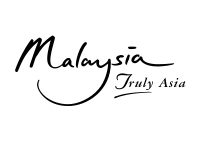
- About Malaysia
- Travel Ideas
- Deals & Packages
- Travel Alert
- Events & Happenings
Dive Into The Unimaginable
Related deals & packages.

Special Weekend Offer - Bayu Balau Beach...
6% off RM 300.00 from RM280.00
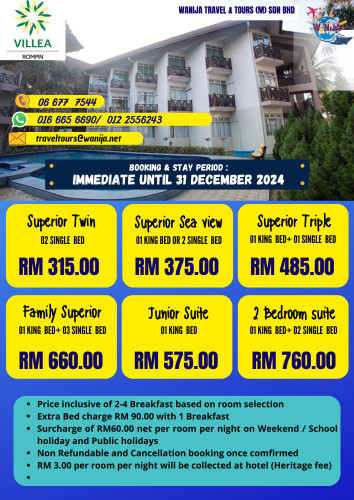
2D1N Villea Lanjut Beach Rompin
22% off RM 405.00 from RM315.00
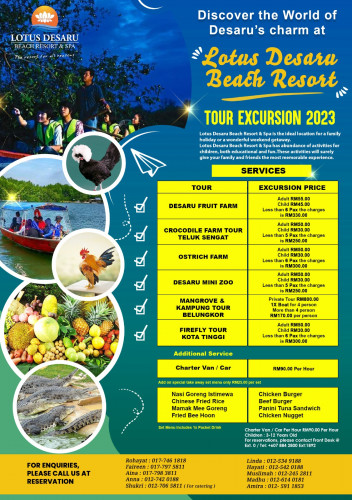
Tour Excursion 2023
from RM55.00
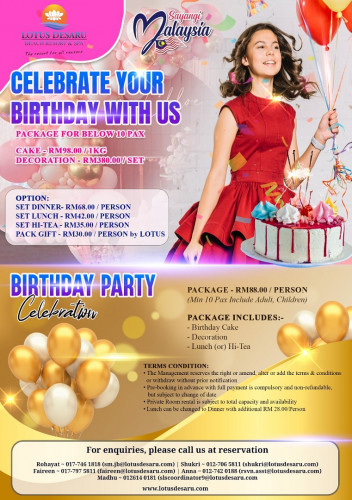
Birthday Party Celebration
from RM88.00
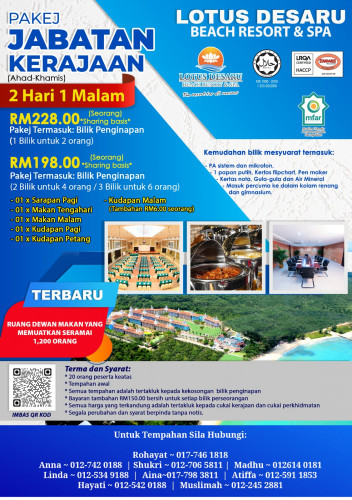
Pakej Jabatan Kerajaan
from RM228.00

Stay & Play
19% off RM 1050.00 from RM850.00
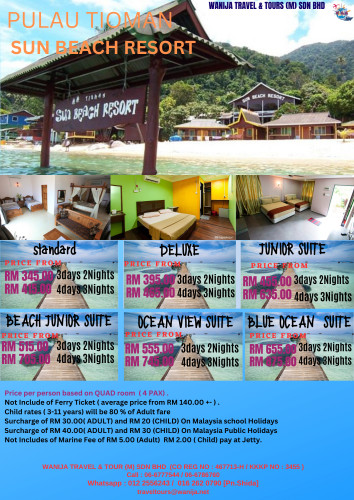
3Days 2Night Tioman Island
31% off RM 500.00 from RM345.00

Negeri Sembilan
X Park: Get a FREE Cap with...
from RM99.00
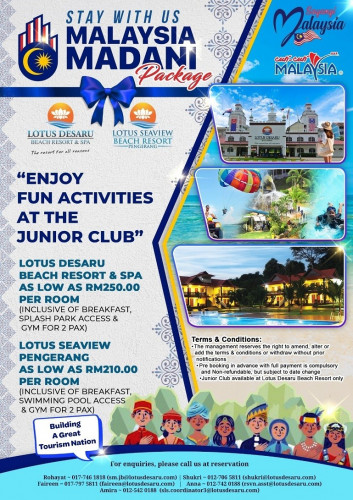

Malaysia Madani Packages
44% off RM 450.00 from RM250.00


Welcome to Islamic Tourism Centre
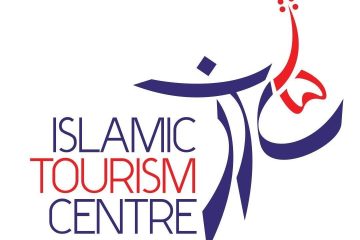
ISLAMIC TOURISM CENTRE ANNOUNCES ITS NEW BOARD OF TRUSTEES LINEUP

A UNIQUE TASTE OF MALAYSIA DURING RAMADAN
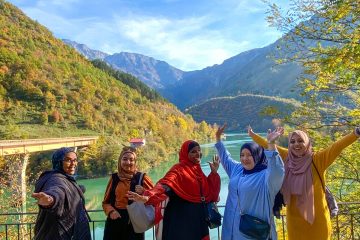
UNLOCKING EUROPE’S MUSLIM TRAVEL MARKET

First time in Malaysia?

Where To Go?

What to Do & Eat?

Discover Undiscovered
Featured categories.

Recreational Park

Wildlife Sanctuary

Souvenir Markets

Most Popular Listing

Masjid Wilayah Persekutuan

Masjid An-Naim, Teluk Intan
Sunway Pyramid Hotel – 4 Bintang – (Perak)

MASJID BESAR SANDAKAN (GRAND MOSQUE OF SANDAKAN)

Masjid Universiti Kebangsaan Malaysia, Bangi
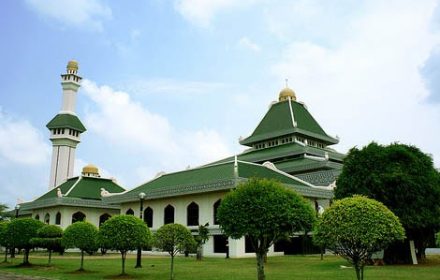
Masjid Al Azim (Masjid Negeri)

Malacca Botanical Garden

Grand Ion Delemen Hotel – 5 Bintang – (Perak)

Masjid Panglima Kinta

Masjid At Taqwa Proton City
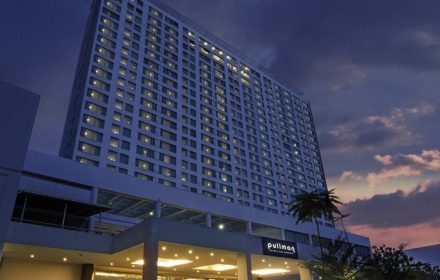
Pullman Kuching – 5 Bintang – (Perak)

Taiping Lake Garden

Masjid Jamek Putera, Masjid Tanah
Bukit kiara park.

Nasi Ayam Chee Meng
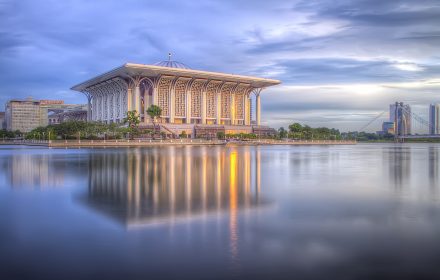
Tuanku Mizan Zainal Abidin Mosque
Discover malaysia by states.

Kuala Lumpur
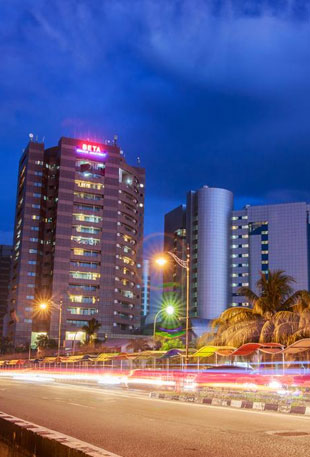
Negeri Sembilan
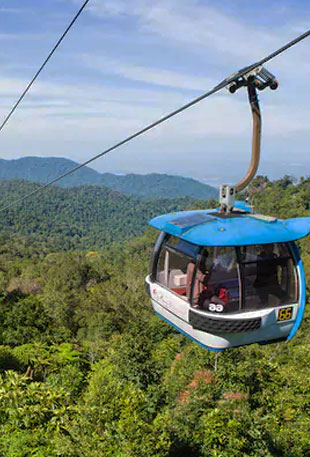
Explore More

International Islamic Arts Garden Complex

Nasyrul Quran

Masjid Ulul Albab (Masjid Kayu Seberang Jerteh)
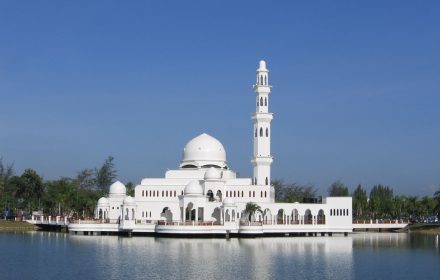
Masjid Tengku Tengah Zaharah (Masjid Terapung)

Masjid Sultanah Nur Zahirah, Marang

Masjid Kristal, Kuala Terengganu
Latest news.

Visit Malaysia 2020 targets to bring in RM100b in tourist receipts

Taiping is No 3 most sustainable city in the world
Upcoming events.

THE MUSLIM-FRIENDLY TOURISM AND HOSPITALITY ASSURANCE AND RECOGNITION (MFAR) PROGRAMME IN NEGERI SEMBILAN
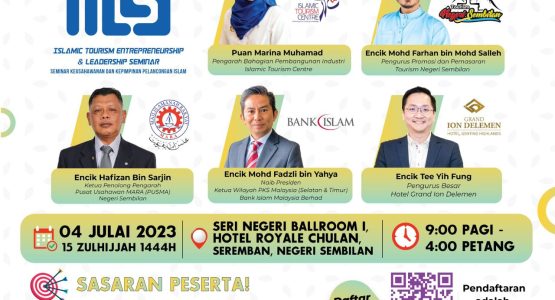
SEMINAR KEUSAHAWANAN DAN KEPIMPINAN PELANCONGAN ISLAM (ISLAMIC TOURISM ENTREPRENEURSHIP AND LEADERSHIP SEMINAR – ITELS)
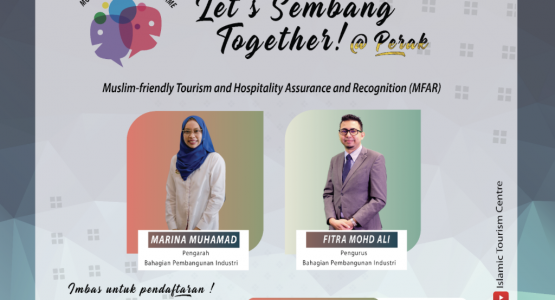
THE MUSLIM-FRIENDLY TOURISM AND HOSPITALITY ASSURANCE AND RECOGNITION (MFAR) PROGRAMME IN PERAK
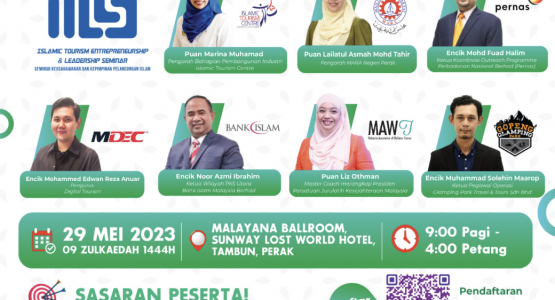
SEMINAR KEUSAHAWANAN DAN KEPIMPINAN PELANCONGAN ISLAM (ISLAMIC TOURISM ENTREPRENEURSHIP AND LEADERSHIP SEMINAR – ITELS)
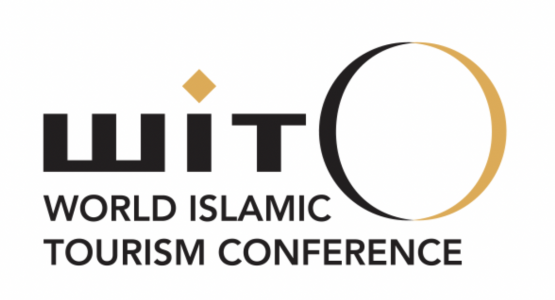
3rd World Islamic Tourism Conference 2022
Lost Your Password?
Reset Password

IMAGES
VIDEO
COMMENTS
We would like to show you a description here but the site won't allow us.
HUNAN BROADCASTING SYSTEM SIGNS MOU WITH TOURISM MALAYSIA FOR DOCUMENTARY... 22 Apr 2024 KUALA LUMPUR, 19 April 2024 - The Minister of Tourism, Arts and Culture, YB Dato Sri Tiong King Sing, stands... DISCOVER SARAWAK'S CHARMS AT MALAYSIA'S BOOTH IN VIETNAM INTERNATIONAL TRAVEL... 11 Apr 2024 HO CHI MINH CITY, 11 April 2024 - Malaysia Tourism ...
KUALA LUMPUR, 26 May 2022 - Tourism Malaysia and Expedia Group, the world's travel platform, today announced a joint-marketing collaboration to support Malaysia's domestic and international efforts to promote tourism to Malaysia. Aligned with Tourism Malaysia's tourism promotion strategies, the agreement will see both parties embark on an Expedia Group Media Solutions global campaign ...
Tourism Malaysia or Malaysia Tourism Promotion Board (MTPB) is an agency under the Ministry of Tourism, Arts and Culture, Malaysia. Tourism Malaysia, formerly known as the "Tourist Development Corporation of Malaysia (TDC)", was established on 10 August 1972. It was then under the former Ministry of Trade and Industry.
www.malaysia.travel mytourismdata.tourism.gov.my MALAYSIA TOURISM PROMOTION BOARD (Ministry of Tourism, Arts and Culture Malaysia) 2nd Floor, No. 2 Tower 1, Jalan P5/6, Precinct 5, 62200 Putrajaya, Malaysia Tel: 603 8891 8000 • Fax: 603 8891 8999 Tourism Infoline: 1 300 88 5050 E-mail: [email protected] KEY PERFORMANCE INDICATORS 2019 ...
Source: Strategic Planning Division, Tourism Malaysia with the cooperation of Immigration Department, Malaysia Malaysia has recorded 10,070,964 tourist arrivals in 2022, a decline of -61.4% and received RM28.23 billion in tourism receipts, a drop of -67.2% compared to the same period in 2019. TOURIST ARRIVALS (MILLION) 30.00 25.00 20.00 15.00 ...
Discover things to do, places to go, events to attend and more at the Tourism Malaysia official site.
In late December 2020, the Prime Minister of Malaysia launched Malaysia's National Tourism Policy 2020-2030, giving concrete direction for the future of Malaysia's tourism industry over the next ten years. In his speech, the Prime Minister emphasised the importance of recovery, connections, and sustainability.
Tourism in Malaysia is a major industry and contributor to the Malaysian economy. Malaysia was once ranked 9th in the world for tourist arrivals. [1] The Travel and Tourism Competitiveness Report 2017 ranks Malaysia 25th out of 141 countries overall. In an effort to diversify the economy and make Malaysia's economy less dependent on exports ...
Malaysia Tourism and Leisure Sector Report 2020-2021. An EMIS Insights Industry Report. EMIS is an ISI Emerging Markets Group Company Date: August 2020. Pages: 73. Available in: English. The tourism and leisure sector is and will be a one of the top contributors to Malaysia's economy in years to come, putting the onus on the government to ...
Statistics about Tourism in Malaysia. Now lets take a look at some of the key statistics that help us better understand the scale of tourism in Malaysia: Tourist Arrivals: In 2019, Malaysia welcomed a record 26.1 million international tourists, which increased by 5.1% compared to the previous year.
Hence, for Malaysia to recover its tourism sector from the fallout brought about by the pandemic, the National Ecotourism Plan 2016-2025, have suggested the following proposals for the Ministry of Tourism, Arts and Culture Malaysia (MoTAC) to put them into action: Attracting ecotourism investors by promoting and emphasising the uniqueness ...
Contact Us Ministry of Tourism, Arts and Culture No. 2, Tower 1, Jalan P5/6 Presint 5, 62200 PUTRAJAYA 03 8000 8000 03 8891 7100 [email protected]
If you're a Malaysian, aged between 18 to 60 years and contribute to Socso, then you're entitled to the monthly contribution at 0.2% of your monthly salary from the employer, in addition to 0.2% from the workers themselves. The contributions should be made before or by the 15th of each month to avoid a fine for late payment.
Malaysia Airport H oldings Berhad (MAHB) will provide rebates on rental for premises at the airport as well as landing. and parking charges. ... training allowance of RM30 per day will also be provided to trainees under EIS. STIMULATE TOURISM SECTOR 18. To stimulate tourism industry, the Government will introduce initiatives as follows: ...
How the EIS works. Every employee in the private sector is automatically enrolled into the EIS, and it is the employer's responsibility to ensure that contributions are made through salary deductions. ... This Is Why Prices In 1957 Malaysia Are Listed In $ By Farhan Gazi. August 28, 2020 [Updated] Guide To Gold Prices In Malaysia. By iMoney ...
Dive Into The Unimaginable. Unravel the wonders of the underwater kaleidoscope and embark on a captivating journey through Malaysia's stunning array of aquatic flora and fauna. From the idyllic beaches of Lang Tengah, Pulau Tenggol, Payar, Tioman, and Redang to the crystal-clear waters of Sipadan, Malaysia's marine ecosystem boasts a remarkable ...
Contact Us Ministry of Tourism, Arts and Culture No. 2, Tower 1, Jalan P5/6 Presint 5, 62200 PUTRAJAYA 03 8000 8000 03 8891 7100 [email protected]
The names of tourism training institutions are as listed. Attend and pass the 4 to 6-month Basic Tourist Guide Course. Sit for the written and practical examinations conducted by the Ministry of Tourism and Culture Malaysia. Results will be released 30 working days after the examinations. Candidates who have passed the Basic Tourist Guide ...
ITC offers Insights e-Newsletter for the latest offerings, developments, news and events on Muslim-friendly tourism in Malaysia and around the globe. Leave this field empty if you're human: Islamic Tourism Centre (Ministry of Tourism, Arts & Culture Malaysia) 13th Floor,No. 2, Tower 1,